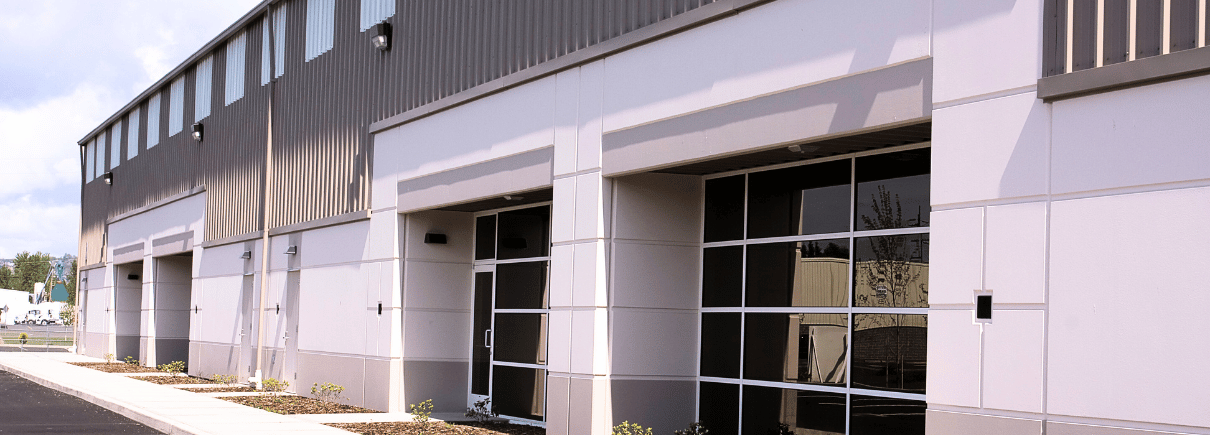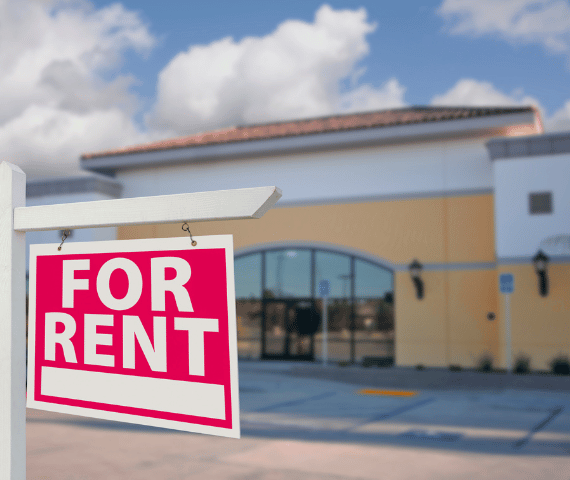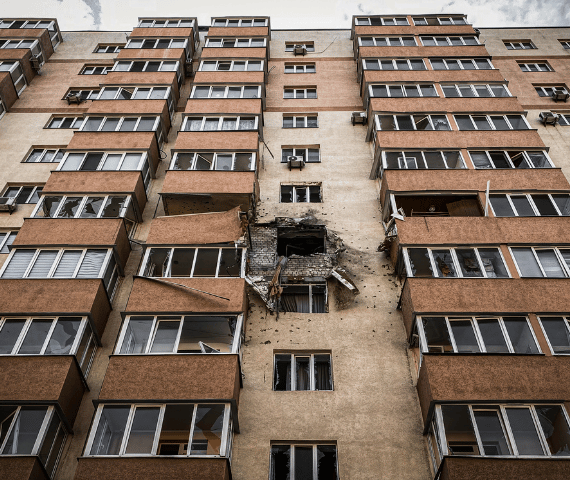Hidden Vacant Property Costs: The True Financial Impact of Empty Commercial Properties
Prolonged vacancies in commercial properties are a pressing concern for landlords and investors increasingly being pressured to reduce expenditure and maximise returns. If you’re amongst them, you’re likely to ask, how much does a vacant property cost in the UK, really? What are the actual costs associated with maintaining vacant commercial buildings these days? Sadly, the issues surrounding property vacancy management are many and complex, so there’s no easy answer. However, we trust this blog will help you navigate the numerous factors you must consider while doing the sums.
Whether it’s a high street retail unit, an office building, or a commercial warehouse, keeping a property without a tenant for an extended period can lead to significant financial strain and legal complications. While the loss of rental income is the most obvious consequence, many other hidden costs can escalate quickly, including increased security requirements, higher insurance premiums, and business rate penalties. We’ll discuss them all in what follows. It’s not all bad news, though. We’ll also share practical strategies for mitigating the risk of excessive spending.
Key Costs Associated With Maintaining Vacant Commercial Buildings
When a commercial property sits vacant, the financial repercussions can quickly grow. Beyond the obvious loss of rental income, landlords must contend with increased insurance, security, utilities, and ongoing maintenance costs. Moreover, the complexities surrounding business rates applied to vacant properties can present an additional and significant financial burden. So, let’s take a closer look at the cost factors individually.
Insurance Costs
Insurance requirements for unoccupied properties in the UK typically mean an unhelpful rise in premiums. Insurers typically classify vacant properties as at a higher risk of damage by fire, water ingress, vandalism, and theft. It is a fact that problems may go unnoticed for extended periods in an empty property. It may be that a standard commercial property insurance policy may not offer sufficient cover for an extended period without tenants. This is likely to leave property owners with a requirement to purchase additional specialist vacant property insurance, which rarely represents a saving.
It is worth noting that without the correct insurance, property owners are financially exposed in the event of an accident or damage to the property. Insurers may also impose additional conditions, such as regular inspections or the installation of enhanced security systems, further adding to the cost of maintaining an empty property.
Insurance costs can be controlled by maintaining a good relationship with providers. Keeping your insurers abreast of your situation and reducing surprises is likely to lead to more reasonable bills. This, however, shouldn’t stop you from shopping around for better value, too.
Security Expenses
Security expenses for unoccupied commercial spaces quickly add up. This is because empty properties are at heightened risk of criminal activity and anti-social behaviour, such as theft, squatting, graffiti and vandalism. To combat this, property owners often need to invest in increased security measures, which can include installing CCTV, fitting alarm systems and hiring security personnel for regular patrols. Security costs can be particularly high for large or easily accessible buildings, where the risk of break-ins is greater.
In addition to physical security, remote monitoring services may be necessary to keep an eye on the premises 24/7. While these measures can help prevent more costly damage and theft, they can still be a considerable drain on resources, particularly when the property is not generating income.
Security costs can sometimes be reduced by liaising with local authorities, police and not-for-profit community actors who have a shared interest in reducing criminality and supporting security measures for empty properties.
Business Rates
In the UK, when it comes to paying business rates, commercial property liability reverts to the owners should a building be unoccupied. Despite temporary periods of relief of three months for commercial property and six months for industrial spaces, full business rates will ultimately be required from the owner. This can be a considerable amount previously paid by the tenant.
Rates relief is available for property owners who temporarily occupy the building, although loopholes around short-term ‘box-shifting’ practices have been closed. Temporary pop-up retail spaces and short-term charity and community group leases can prove effective at reducing the business rates burden for landlords.
ASTOP specialises in the latter and forms partnerships between landlords with empty properties between charities and good causes who need space. The benefits go beyond pure cost saving, but the resulting business rates relief can prove significant.
Utilities & Maintenance Costs
Even when unoccupied, commercial properties still require ongoing utility services and regular maintenance to ensure that the building remains in good condition. Heating, water, and electricity may still need to be run periodically to prevent damage, such as burst pipes or electrical faults, especially during colder months.
Additionally, essential systems like HVAC, plumbing, and security alarms need routine maintenance to prevent costly repairs down the line. Over time, these expenses can add up, making a seemingly low-maintenance vacant property an unexpectedly costly liability.
Reducing spending on maintenance and utilities comes fraught with risk. Any savings in the short term may lead to additional costs down the line, so scrimping isn’t generally recommended.
Legal Liabilities of Vacant Properties
Beyond the financial costs, prolonged vacancies introduce significant legal risks for property owners. Vacant commercial properties can become hazardous, increasing the likelihood of accidents or trespassing, and owners are still responsible for maintaining safety standards, even when the property is not in active use. Legal liabilities surrounding injuries, vandalism, and property damage can expose landlords to costly litigation and fines.
Injuries on Vacant Properties
A vacant property does not absolve the owner of responsibility for maintaining a safe environment. Trespassers, whether intentional or accidental, may access an unoccupied building and could sustain injuries due to unsafe conditions, such as broken staircases, unsecured equipment, or even weather damage.
Under UK law, property owners can still be held liable for injuries sustained on their premises, even if the person injured is trespassing. Failure to secure the property adequately, or to maintain safe conditions, can result in legal claims of negligence, which can lead to compensation claims, costly legal fees, and reputational damage.
Illegal Activities
Vacant properties are often seen as easy targets for vandals and criminals. Graffiti, broken windows, and more severe structural damage can occur if trespassers access the building. Owners may also face legal action if, through negligence, the vacant property becomes a base for illegal activities, such as drug use, squatting, illegal parties or other activities deemed to be a public nuisance. Local authorities can issue enforcement notices under the Environmental Protection Act, compelling the owner to carry out repairs or face fines. In extreme cases, local councils have the power to force the sale of derelict properties, further complicating the ownership of a long-term vacant property.
How to Mitigate These Risks
While prolonged vacancies present significant financial and legal challenges, there are several steps property owners in the UK can take to reduce these risks. Through proactive management, landlords can limit their exposure to financial losses and potential liabilities.
Regular Property Inspections
Conducting regular inspections is essential to mitigate the risks of prolonged emptiness. These inspections help identify security breaches, maintenance issues, or hazards that could lead to injury or damage. Regular visits also help deter trespassers, as the property shows signs of ongoing attention and care.
Landlords may wish to consider working with a specialist property management company, which can carry out these inspections, ensure that maintenance is performed, and address any immediate concerns before they become significant problems. Regular inspections also demonstrate compliance with insurance policy requirements, reducing the risk of denied claims in case of damage or accidents.
Securing Appropriate Insurance
Vacant property insurance is critical to ensuring adequate protection during periods of non-occupancy. While it may be more expensive than standard commercial insurance, the peace of mind it provides is invaluable. Property owners should work closely with their insurers to ensure that all potential risks are covered and that they understand the conditions for maintaining coverage, such as regular inspections or implementing specific security measures.
Moreover, property owners should also review their policies in case they can add endorsements for vacant property coverage, ensuring they remain protected during longer vacancies.
Heightened Security Measures
To mitigate prolonged vacancies and offset business rates costs, property owners can explore short-term letting options. In the UK, temporary pop-up shops, seasonal businesses, or flexible office spaces are increasingly popular. These arrangements can bring in some income, helping to cover business rates and other costs while preventing the building from falling into disrepair.
Additionally, letting the space out on a short-term basis can keep the property looking occupied and well-maintained, making it more attractive to long-term tenants and avoiding the penalties associated with prolonged vacancies under local business rates rules.
Additional business rates relief, leading to more savings, is available should landlords offer short-term leases to charities or organisations deemed to benefit the community. These good cause partnerships are supported by national and local governments and, as a result, often cited as a particularly ethical way of reducing the costs associated with under occupancy.
Short-Term Leases
To mitigate prolonged vacancies and offset business rates costs, property owners can explore short-term letting options. In the UK, temporary pop-up shops, seasonal businesses, or flexible office spaces are increasingly popular. These arrangements can bring in some income, helping to cover business rates and other costs while preventing the building from falling into disrepair.
Additionally, letting the space out on a short-term basis can keep the property looking occupied and well-maintained, making it more attractive to long-term tenants and avoiding the penalties associated with prolonged vacancies under local business rates rules.
Additional business rates relief, leading to more savings, is available should landlords offer short-term leases to charities or organisations deemed to benefit the community. These good cause partnerships are supported by national and local governments and, as a result, are often cited as a particularly ethical way of reducing the costs associated with underoccupancy.
Conclusion
Prolonged vacancies in commercial properties can lead to significant hidden costs, including increased insurance premiums, security expenses, and substantial business rates liabilities. Property owners in the UK must be aware of the financial and legal risks of holding empty properties and take proactive measures to mitigate them.
This includes forming partnerships with local good causes to reduce business rate liabilities, which is where ASTOP can help. If you’d like to learn more, you can contact ASTOP’s Shaylesh Patel directly below.







